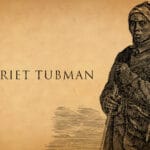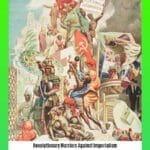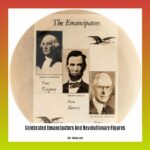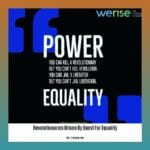Everyone knows the heroic Harriet Tubman, a beacon of hope in the fight against slavery. Yet, the stories of her family, who endured the same system of oppression, often remain in the shadows. This is the story of Linah Ross, Harriet’s older sister, a life fragmented by the cruelties of slavery. It’s a story of heartbreak, resilience, and the struggle to reclaim a narrative lost to the deliberate erasure of enslaved voices.
Linah’s Story: Pieces of a Life
Early Life: Shadows of Slavery
Linah Ross, born around 1808 in Dorchester County, Maryland, entered a world defined by the brutal realities of slavery. Her childhood, spent alongside eight siblings, including her younger sister Harriet, was likely one of constant hardship. Their parents, Benjamin Ross and Harriet “Rit” Green, instilled in their children the values of love, family, and resilience—essential tools for survival in a system designed to strip them of their humanity. This early life, though shrouded in mystery, probably mirrored the experiences of countless enslaved children: a constant struggle for survival punctuated by stolen moments of joy and connection within their tight-knit family.
Family Torn Apart: The Agony of Sale
Tragedy struck when Linah, along with her sisters Mariah Ritty and Soph, were sold south, ripped away from their family and thrust into the cruel machinery of the interstate slave trade. This separation, a common tactic used to control enslaved people, left permanent scars on families, creating voids that could never truly be filled. The forced exodus severed Linah’s connection to her family history in Maryland, leaving behind only fragmented pieces of her life. The fates of Mariah Ritty and Soph remain largely unknown, their stories lost to the abyss of slavery.
A Glimmer of Hope: Marriage to Harkness Jolley
Amidst the darkness, a faint ray of light emerges: Linah’s marriage to Harkness Jolley. This detail, precious in its scarcity, offers a glimpse into her personal life. Who was Harkness? Was he a source of comfort and strength in a world filled with pain? Did they share dreams of freedom, whispering hopes for a better future for their children, if they had any? We can only speculate, filling the historical gaps with our imagination. This union, however, suggests a resilience of spirit, a determination to find love and connection even in the face of unimaginable adversity.
The Silence of History: Reclaiming Linah’s Narrative
The details of Linah’s life following her sale remain elusive, obscured by time and the deliberate erasure of enslaved narratives. This scarcity of information is a consequence of a system that sought to dehumanize individuals like Linah, reducing them to mere commodities. Researchers face a daunting task, piecing together fragments of information from plantation records, census data, and other historical scraps. This ongoing research, though challenging, is crucial for reclaiming the narratives of those intentionally forgotten.
Remembering Linah: Honoring a Lost Life
Linah’s story is more than just an individual account; it represents the collective experience of countless individuals whose identities were stolen and whose stories were suppressed. While her sister Harriet became an icon of resistance, Linah’s story embodies the silent suffering endured by many, a testament to slavery’s devastating human cost. By acknowledging her existence and striving to uncover the details of her life, we honor her memory and the memory of all those lost to slavery’s cruelties. What can we learn from Linah’s story? How can we ensure that her experience, and the experiences of countless others, are not forgotten, but rather serve as a constant reminder of the importance of empathy, justice, and the fight for human dignity?
Rachel: Another Sister Lost
Rachel Ross, Harriet’s younger sister born around 1825, also lived a life marked by slavery’s brutal realities. Like Harriet, Rachel yearned for freedom. However, her story took a heartbreaking turn when she and her children were sold to different owners, a cruel practice designed to break the spirits of enslaved people. The fates of Rachel’s children remain largely unknown, another tragic consequence of slavery’s systematic erasure of families. Harriet, despite her perilous work on the Underground Railroad, likely made attempts to rescue Rachel and her children, but the risks were immense, and success was never guaranteed. The pain of Rachel’s situation probably fueled Harriet’s unwavering determination to liberate others. Rachel died enslaved in Bucktown, Maryland, in 1859, a year before Harriet’s last known rescue mission. This tragic end serves as a stark reminder of the system’s overwhelming power and adds a poignant layer to Harriet’s continued work. Each person she helped escape could be seen as a tribute to Rachel’s memory, a small victory against the system that had claimed her life.
Benjamin Ross: A Father’s Legacy
Benjamin Ross, Harriet’s father, navigated the challenging world of slavery in the early 1800s. Born between 1785 and 1787 in Dorchester County, Maryland, Benjamin was enslaved by Anthony Thompson and developed the valuable skill of timber estimation. This suggests a level of intelligence and responsibility that likely earned him a foreman role. In 1808, he married Harriet “Rit” Green, and together they raised nine children, including Harriet. They instilled in their children a deep sense of faith, family, and resilience, values that undoubtedly shaped Harriet’s future. Anthony Thompson’s will granted Benjamin freedom around 1840, along with ten acres of land—a symbol of his newfound independence. Interestingly, he continued working for the Thompson family after his emancipation, suggesting a complex relationship. In 2021, archaeologists discovered the remnants of the Ross family homesite, unearthing artifacts that offer a tangible connection to their daily lives. These discoveries whisper stories of resilience, family, and hardship.
Linah Ross: Recommended Titles and Key Lines
Recommended Titles:
- The Lost Sister: Unraveling the Mystery of Linah Ross, Harriet Tubman’s Elder Sibling
- Linah Ross: A Life Shrouded in Shadow – Exploring the Family of Harriet Tubman Beyond the Underground Railroad
- Sold South: The Tragic Fate of Linah Ross and Her Sisters – Forgotten Victims of Slavery
Powerful Key Lines:
- Linah Ross, Harriet Tubman’s eldest sister, remains a largely unknown figure, her life obscured by the limited historical records of enslaved individuals.
- Born around 1808, Linah Ross, along with two of her sisters, was sold into slavery in the Deep South, tragically separating her from her family, including the renowned Harriet Tubman.
- While Harriet Tubman bravely fought for freedom, the fate of her sister, Linah Ross, serves as a stark reminder of the countless unnamed victims of slavery whose stories remain untold.
- Married to Harkness Jolley, Linah Ross’s life after being sold south remains shrouded in mystery, a testament to the systemic erasure of enslaved people’s histories.
Linah Ross: A Life Fragmented by Slavery
Linah Ross’s story, though intertwined with that of her famous sister, is tragically fragmented by the scarcity of historical records. What we know is pieced together from various sources, highlighting the challenges of reconstructing the lives of those lost to slavery.
Early Life and Family: Linah was born around 1808 in Dorchester County, Maryland, the eldest of nine children. Their family life, though lived under slavery’s oppression, was marked by a strong sense of kinship—a bond cruelly severed by the slave trade.
The Traumatic Separation: Linah’s sale into slavery in the Deep South represents a pivotal and tragic event. This separation from her family, including Harriet, underscores slavery’s devastating impact on family structures.
Marriage and the Unknown: Linah’s marriage to Harkness Jolley offers a glimpse into her personal life but raises more questions than it answers. We know little about their life together.
The Silence of History: The lack of information surrounding Linah’s life after her sale is a poignant reminder of the countless untold stories of enslaved individuals. This silence reflects the systemic erasure of their experiences.
Unique Insights and Untapped Potential
- Emotional Impact: Explore the emotional toll of family separation on enslaved individuals. Linah’s story provides an opportunity to delve into this often-overlooked aspect of slavery.
- Comparative Analysis: Contrast Linah’s life with Harriet Tubman’s. While Harriet’s activism is well-documented, Linah’s story represents the silent suffering of many who couldn’t escape.
- The Search for Linah: Frame the article around the search for information about Linah. This can engage the reader while acknowledging the limitations of the historical record.
Don’t forget to plan your Paddy’s Day outfits for the upcoming celebration!
- The Ultimate Guide to Italian Greyhound Sweaters: Keeping Your Iggy Warm & Stylish - November 28, 2024
- NourishMax Eye Cream: A Comprehensive Review (Does It Really Work?) - November 28, 2024
- Creative Pledge Scavenger Hunt Ideas: Build Bonds & Foster Camaraderie - November 28, 2024















